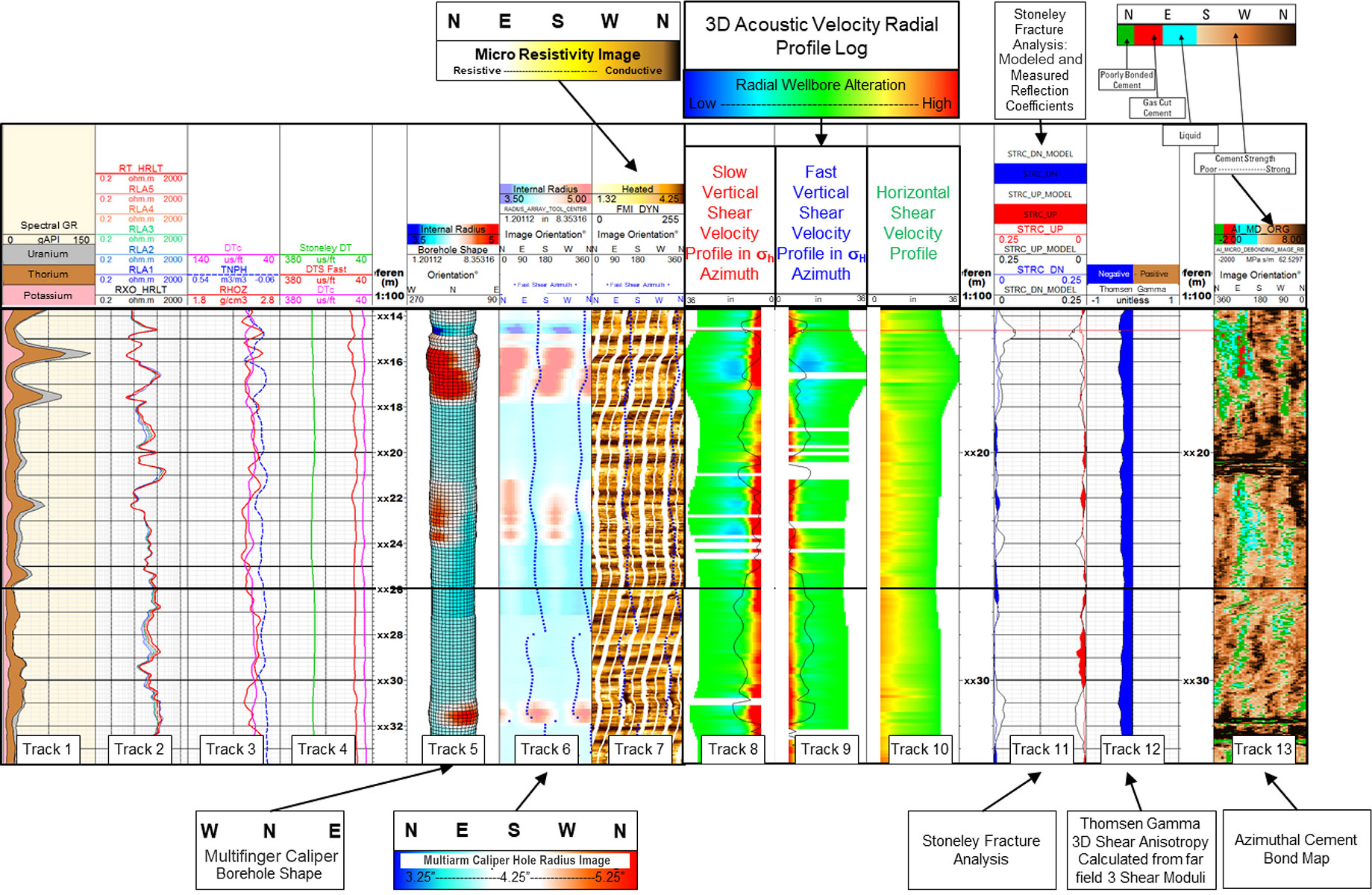
(Source: Shutterstock.com)
[Editor's note: A version of this story appears in the August 2020 edition of E&P. It was originally published Aug. 3, 2020. Subscribe to the magazine here.]
Exploration wells drilled in the offshore Kutch-Saurashtra rift basin seek to evaluate poorly illuminated sub-basalt Mesozoic pays below the Deccan Trap volcanics. Operators’ previous experiences in these reservoirs have uncovered challenging subsurface conditions, including 3,000 m of hard, abrasive formations, abnormal pore pressure regimes and HP/HT conditions that compromise ROP and lead to premature termination of wells. Traditional prognosis methods fail to predict the abnormal pore pressure regimes and stress anisotropy created by the disturbed tectonic history and complex geological setting. Regional operators face unpredictable flow events and wellbore instability incidents such as cavings, tight pulls, breakouts and equivalent circulating density fluctuations during drilling.
Apart from the drilling and completions challenges, the wellbore instabilities affect openhole logging and coring operations, leading to inadequate formation evaluation. As a result of poor hole conditions, the production casing lands short of the target and the cement integrity is also compromised, leading to inconclusive well tests and discouraging hydraulic fracturing results.
As exploration and field development activities increase in this region offshore Western India, operators seek to improve the understanding of earth stresses to enable better insights of the subsurface, maintain hole integrity and optimally evaluate hydrocarbon- in-place volumes.
To minimize well construction challenges and hence improve hole integrity, operators in this region need a reliable mechanical earth model (MEM). However, challenging drilling conditions have resulted in the absence of core and other external calibration data needed to optimize the models. Schlumberger engineers have developed a unique workflow that fills this data gap by leveraging 3D acoustic radial profiling data from the Sonic Scanner acoustic scanning platform with the integrated stress analysis plug-in on the Techlog wellbore software platform. The combination of these technologies has provided geomechanical information that has contributed to the successful completion of openhole sections with minimal nonproductive time (NPT) and significant increases in well deliverability metrics.
Technologies
The acoustic scanning platform provides axial, azimuthal and radial information from the monopole and dipole measurements for near-wellbore and far-field slowness information, giving valuable insight into earth stress, pore pressure and rock mechanical properties in the downhole environment.
The wellbore stability modeling software guides users through the steps required to build a calibrated MEM that integrates all data and provides an understanding of rock properties surrounding the wellbore and in situ stresses. This enables the prediction of potential shear and tensile failures at borehole walls. The software can predict breakout and breakdown pressures based on wellbore direction versus the orientation of the principal stress tensor. This information helps users plan a safer mud-weight window for drilling based on the sensitivity analysis tool in the wellbore software platform.
The integrated stress analysis plug-in determines stress direction from borehole images, calipers and dipole sonic anisotropy data. The borehole shape functionality analyzes ultrasonic and resistivity images to identify borehole stress indicators. Combined with data acquired using the acoustic scanning platform, it also determines stress magnitude and regime, which can then be used to perform multiwell analysis for planning vertical and deviated wells in the field. By utilizing the wellbore as a downhole laboratory, the final deliverable of the integrated technologies shows direction, regime, stress ratio and stress Q factor and helps operators optimize their resources for acquiring the additional external calibration data required to build a reliable MEM.
Case study
A current study focuses on observations from one offset well and one planned well in the Kutch-Saurashtra rift basin. The operator wanted to drill through more than 3,000 m of highly abrasive formation consisting of the overlying basalt of the Deccan Trap and tight sands-shale sequences of the Bhuj and Jhuran formations.
A predrill 1D MEM was created for the planned well using available offset well 3D acoustic radial profiling data from the acoustic scanning platform and drilling history (Figure 1).

The offset well integrated analysis strongly suggests an interplay of wellbore shear failure with subvertical natural fractures and mechanically heterogeneous dipping layers, resulting in extremely complicated hole failure patterns across most of the drilled intervals. Seepage fluid loss from the cement slurry into the natural fractures during the curing stage can be interpreted to be responsible for the poor cementation. The Stoneley Fracture Analysis, dipole dispersion analysis and negative far-field 3D shear velocity anisotropy across the sand facies indicate good far-field permeability due to the compliant natural fractures and fissures. Near-wellbore alteration due to high hoop stresses appears to extend deep into the formation, which in turn is expected to limit perforating charges penetration and reservoir contact.
In the absence of external calibration data, the integrated stress analysis plug-in on the wellbore software platform was used to invert the stress magnitudes and rock mechanical properties. The MEM helped the operator to plan a proactive mud weight policy to drill the challenging Deccan Trap, Bhuj and Jhuran formations in the planned well. The drill bit and bottomhole assembly (BHA) were engineered based on the MEM rock mechanical properties (Figure 2).

Based on results from drilling the 12¼-inch section and minor geological variations, fresh logs from the acoustic scanning platform were acquired in the 12¼-inch section, and the predrill model for the 8½-inch section was updated to account for the local variations in the stress regime. New stable mud weight windows were provided for the 8½-inch section, and key drilling parameters, LWD logs and cuttings were monitored in real time while drilling the section. The process was reiterated before drilling the challenging Jhuran Formation.
The 3D acoustic profiling data revealed intervals with high side-burden variations, which led to additional compaction and abnormal pore pressures. A proactive mud weight increase policy based on the MEM and interventions based on realtime monitoring resulted in smooth drilling and completion of both sections with minimal NPT and a 40% increase in ROP. Selectively optimized perforation intervals flowed gas to surface with minimal stimulation. Time-savings for drilling the 12¼inch and 8½-inch sections is estimated tobe about 40 offshore rig days.
Conclusion
The combination of using the data from the acoustic scanning platform with the stress analysis plug-in on the wellbore software platform significantly increases the accuracy of stress predictions in Western offshore India, demonstrating the potential to increase exploration success in the region. Real-time monitoring of drilling parameters, mud log, cuttings and LWD logs improves the accuracy of mud weight, minimizing well flow incidents. The integrated measurements ensure the most consistent, accurate MEM, helping to improve BHA design and tailor drill bits for increasing ROP. A better understanding of earth stresses results in a dramatic reduction in wellbore instability-related drilling events and NPT, enabling operators to increase drilling efficiency with consistent ROP in abrasive formations and save a significant number of rig days.
Acknowledgment: This article is based on the OTC-30593-MS paper, “Geomechanical Aspect of Successful Deep Tight Gas Sandstone Exploration Involving Drilling to Completion.”
Recommended Reading
For Sale, Again: Oily Northern Midland’s HighPeak Energy
2024-03-08 - The E&P is looking to hitch a ride on heated, renewed Permian Basin M&A.
Gibson, SOGDC to Develop Oil, Gas Facilities at Industrial Park in Malaysia
2024-02-14 - Sabah Oil & Gas Development Corp. says its collaboration with Gibson Shipbrokers will unlock energy availability for domestic and international markets.
E&P Highlights: Feb. 16, 2024
2024-02-19 - From the mobile offshore production unit arriving at the Nong Yao Field offshore Thailand to approval for the Castorone vessel to resume operations, below is a compilation of the latest headlines in the E&P space.
E&P Highlights: Feb. 26, 2024
2024-02-26 - Here’s a roundup of the latest E&P headlines, including interest in some projects changing hands and new contract awards.
CEO: Continental Adds Midland Basin Acreage, Explores Woodford, Barnett
2024-04-11 - Continental Resources is adding leases in Midland and Ector counties, Texas, as the private E&P hunts for drilling locations to explore. Continental is also testing deeper Barnett and Woodford intervals across its Permian footprint, CEO Doug Lawler said in an exclusive interview.





